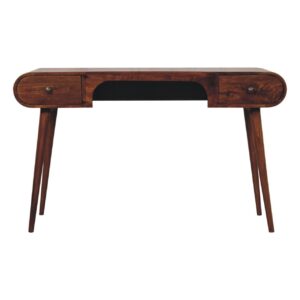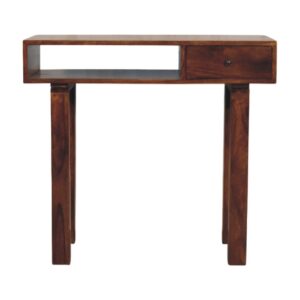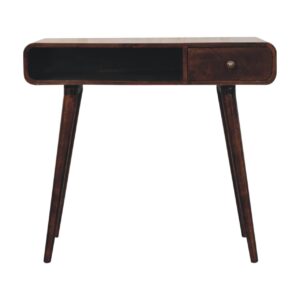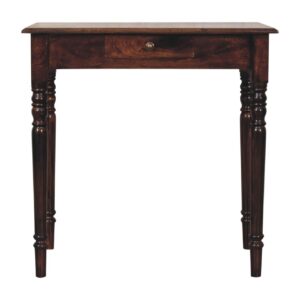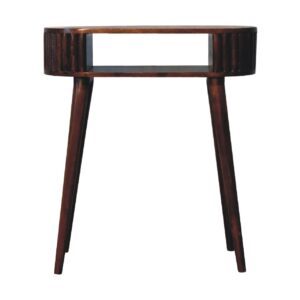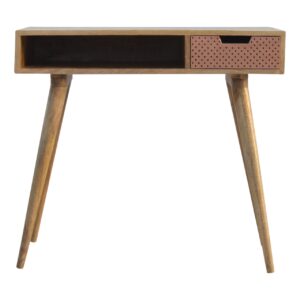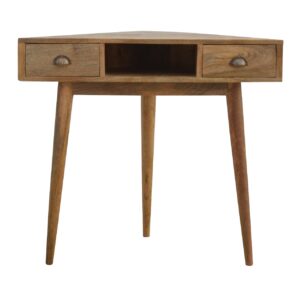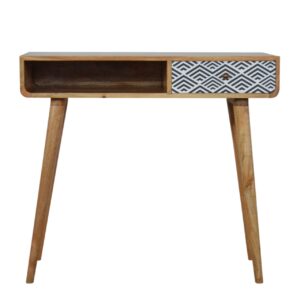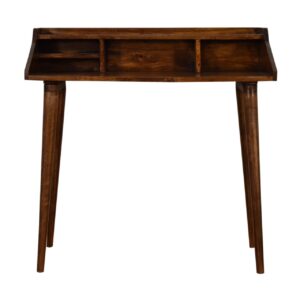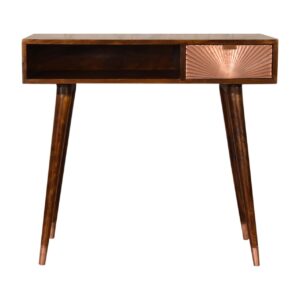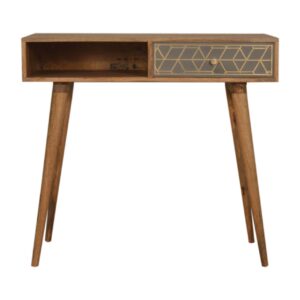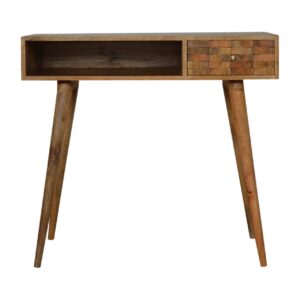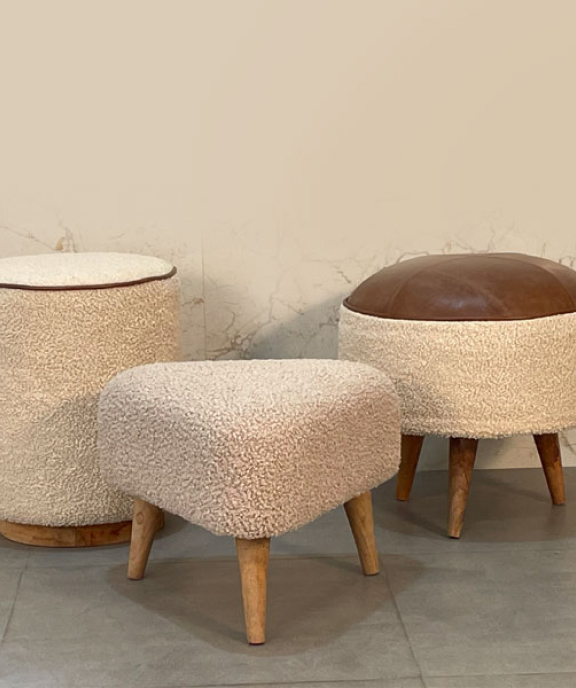In today’s fast-paced work environment, the importance of a well-organized, ergonomic workspace cannot be overstated, particularly when dealing with the constraints of compact areas.
This guide presents 12 insightful tips for creating an ergonomic computer desk solution that maximizes the utility of limited space without compromising on comfort or productivity.
From understanding the fundamentals of ergonomics in small environments to exploring space-saving design principles and the advantages of adjustable-height and multifunctional desks, these recommendations are meticulously crafted to enhance your workspace.
We will also delve into the health benefits of ergonomic furniture, the strategic use of corner desks, and the necessity of balancing style with functionality while ensuring durability and ease of maintenance.
Equip yourself with the knowledge to transform your compact work area into an optimized, health-conscious, and efficient space.
Understanding Ergonomics in Small Spaces
Ergonomics in confined environments necessitates meticulous consideration of furniture dimensions and placement to ensure user comfort and productivity. A primary concern is the minimization of desk clutter, which can be both a symptom and a cause of poor ergonomic practices. Clutter contributes to a chaotic work environment and can lead to decreased efficiency and increased stress. Efficient organization and storage solutions are critical in small spaces to keep necessary items within reach while maintaining a clear workspace.
Moreover, seating posture is crucial in the configuration of a compact ergonomic setup. The chair should be carefully selected to provide adequate support and adjustability. This includes lumbar support for the lower back, adjustable armrests to prevent shoulder strain, and a seat height that allows the user’s feet to be flat on the floor with thighs parallel to the ground. The positioning of the chair relative to the desk must allow for the user’s elbows to rest comfortably at a 90-degree angle when typing, thereby reducing the risk of repetitive strain injuries.
Attention to these details ensures the preservation of health and enhances performance, even within the spatial limitations of a small environment.
Space-Saving Design Principles
One must judiciously select multi-functional furniture and accessories that optimize the limited space without compromising on ergonomic integrity. To craft an efficient compact workspace, the incorporation of modular components is paramount. These elements allow for customization to the user’s specific spatial constraints and functional requirements, ensuring that every inch is utilized effectively. Modular desks can be expanded or reconfigured with detachable parts, which adapt to the evolving needs of the space and the user.
Vertical storage solutions are another cornerstone of space-saving design principles. Instead of expanding horizontally and taking up valuable floor area, vertical storage capitalizes on the often-underutilized vertical plane. Shelving units installed above the desk or attached to the sides provide ample storage for office supplies and peripherals, thus clearing the workspace for active use. This principle not only maximizes the physical workspace but also contributes to a clutter-free environment that is conducive to productivity and mental clarity.
Adjustable Height for Health
Transitioning from spatial design to user health, adjustable height desks offer a crucial benefit by allowing individuals to alternate between sitting and standing positions throughout the workday. This versatility addresses a growing health concern associated with sedentary work environments—namely, the negative impact of prolonged sitting on musculoskeletal health.
Ergonomic research underscores the importance of dynamic movement for circulation, and the prevention of strain and discomfort. An adjustable height desk facilitates this by enabling users to maintain an optimal sitting posture and to engage in desk exercises that can alleviate stress on the back, neck, and shoulders. The ability to shift from sitting to standing effortlessly encourages micro-breaks from static positions, promoting blood flow and reducing the risk of developing repetitive strain injuries.
The analytical focus on the health benefits of adjustable desks is crucial. In-depth examinations reveal that not only do these desks contribute to physical well-being, but they also foster increased productivity and mental alertness. By integrating the capability to adjust desk height seamlessly into a compact ergonomic design, one can create a workspace conducive to both performance and health—a synthesis of design innovation and physiological consideration.
Multifunctional Desks for Versatility
Beyond adjustable height, a compact ergonomic computer desk should also offer multifunctional features to maximize space efficiency and adapt to a variety of tasks and workflows. The integration of such features into the design of compact desks requires a detailed understanding of the ergonomics associated with computer-centric work environments, as well as an innovative approach to space optimization.
Desk clamps represent a key multifunctional element, allowing for the attachment of accessories like monitor arms, task lights, or privacy panels directly to the desk. This not only conserves valuable desktop real estate but also enhances the desk’s adaptability to individual user needs. The careful placement of clamps can facilitate seamless transitions between tasks that demand varied spatial arrangements, promoting an uncluttered and productive workspace.
Storage solutions embedded within a compact ergonomic desk are essential for maintaining a tidy and efficient work area. Thoughtfully designed storage compartments, whether in the form of drawers, shelves, or hanging modules, should accommodate the diverse range of supplies and devices inherent to modern workflows. These storage components must be accessible without impeding the user’s movement or posture, thus preserving the ergonomic integrity of the workspace.
The strategic incorporation of multifunctional features into compact desks is pivotal in creating an ergonomic, versatile, and space-conscious working environment.
Benefits of Corner Desks
A corner desk can significantly enhance the use of limited office space, providing a larger work surface within a compact footprint. The geometric benefit of an L-shaped design is the cornerstone of space optimization in office environments where every square inch is at a premium. By fitting snugly into the corner of a room, these desks minimize wasted space and create a defined work zone that can otherwise be difficult to establish in smaller areas.
The L-shaped advantages extend beyond mere space-saving. Corner desks inherently offer an extended desktop area, allowing users to set up a more organized and efficient workspace. One wing of the desk can be dedicated to computer work with monitors and input devices, while the other can serve as a space for writing, reviewing documents, or setting up a secondary workstation. This spatial division aids in reducing clutter and facilitating a more focused and productive work environment.
Moreover, the configuration of corner desks supports a dual-monitor setup without compromising desk space for other tasks. It also enables users to pivot between different work areas, enhancing ergonomic movement and reducing the physical strain associated with stationary desk work. Thus, corner desks represent a strategic choice for professionals aiming to maximize their office layout’s functionality and comfort.
Wall-Mounted Desks and Space
Embracing the concept of minimalism and space efficiency, wall-mounted desks offer a versatile and sleek solution for those working within constrained spaces. By attaching directly to the wall, these desks eliminate the need for bulky legs and stands, which can be a hindrance in limited square footage environments. The design of wall-mounted desks often incorporates the smart use of vertical space, typically underutilized in traditional desk setups.
Analyzing the ergonomic aspects of wall-mounted desks reveals that they can be installed at a precise height tailored to the user’s requirements, promoting better posture and reducing the likelihood of strain. Furthermore, integrating floating shelves above or beside the desk area maximizes storage opportunities without encroaching on valuable floor space. These shelves can house essential work materials, tech peripherals, or personal items, keeping the workspace uncluttered and functional.
Expertly crafted wall-mounted desks frequently include hidden compartments, which serve as innovative solutions for managing cables and storing office supplies. This feature maintains a streamlined aesthetic and further enhances the minimalist appeal. Detailed attention to the design and functionality of these compartments ensures that accessibility and convenience are not sacrificed for style.
The combination of ergonomic design, space-saving features, and aesthetic appeal positions wall-mounted desks as a compelling option for modern, compact workspaces.
Integrating Keyboard Trays
Incorporating a sliding keyboard tray into a compact desk setup can significantly enhance ergonomic comfort and conserve valuable workspace. The ergonomic benefits stem from the ability to adjust the tray to the ideal height and distance, minimizing strain on the wrists and forearms. This is particularly crucial for users who spend prolonged periods typing, as it can help prevent repetitive strain injuries.
From a space-saving perspective, under desk storage solutions, such as a retractable keyboard tray, allow for a clear and uncluttered desktop. By utilizing sliding mechanisms, these trays can be smoothly pulled out for use and easily stowed away when not in operation, thereby optimizing the available surface area of the desk. The integration of such mechanisms should be carefully analyzed to ensure they provide stability and ease of motion without sacrificing the structural integrity of the desk.
Moreover, the selection of materials for the keyboard tray should complement the overall design of the desk and be durable enough to withstand the rigors of daily use. Ultimately, integrating a keyboard tray is a strategic move that can lead to a more organized, comfortable, and efficient workspace.
Cable Management Essentials
Effective cable management is a critical component of any compact ergonomic computer desk setup, ensuring a tidy and hazard-free work environment. Cluttered cables not only detract from the clean lines of a well-designed workspace but also pose tripping hazards and can contribute to equipment malfunction or failure due to poor ventilation and overheating.
Under desk solutions play a pivotal role in cable organization. By utilizing horizontal and vertical space beneath the desk surface, these systems can discreetly route cables away from foot traffic and mitigate the risk of accidental disconnections or damage. Cord clips adhere to the underside of the desk or along its legs, guiding cables along a predetermined path and preventing them from tangling or becoming kinked.
A systematic approach to cable management must also consider the ease of access for maintenance and adjustments. This often involves strategically placed cable trays and sleeves that consolidate multiple cords, allowing for quick identification and individual cable retrieval without disrupting the entire arrangement.
Ultimately, an expertly managed cable system is not merely an aesthetic choice but a functional necessity. It supports the longevity of electronic devices, ensures optimal performance, and upholds the ergonomic integrity of the compact desk space.
Maximizing Desk Ergonomics
Several key factors contribute to maximizing desk ergonomics, including proper desk height, chair alignment, and the positioning of computer peripherals to prevent strain and injury.
The desk height must allow for the user’s arms to rest comfortably at a 90-degree angle, which minimizes the risk of musculoskeletal issues. Furthermore, chair selection is not just about comfort; it requires an analytical approach to ensure that the chair offers adequate lumbar support for posture correction. An ideal chair should be adjustable in height, with a backrest that conforms to the natural curve of the spine, and armrests that lessen shoulder tension.
The ergonomic configuration extends to the placement of the keyboard, mouse, and monitor. The monitor should be at eye level and an arm’s length away to avoid neck and eye strain. A keyboard and mouse should be positioned to allow for a natural, relaxed posture of the hands and wrists. In a compact desk setup, these peripherals might be more closely arranged, but should not compromise on the ergonomics. To achieve this, one may need to invest in compact, ergonomic-designed products.
Attention to these details significantly enhances the functionality and health benefits of a compact ergonomic computer desk.
Health Benefits of Ergonomic Desks
Adopting an ergonomic desk setup can lead to a significant reduction in the risk of developing musculoskeletal disorders, which are often associated with poor posture and repetitive strain injuries. The strategic design of ergonomic desks is aimed at facilitating posture correction by aligning the spine, neck, and hips, thereby mitigating the long-term impact of sitting. This alignment is crucial in preventing the onset of chronic pain and in promoting a healthier working environment.
Ergonomic desks often come with adjustable features that tailor to the individual’s body dimensions and work habits, contributing to a more personalized workspace. Height-adjustable surfaces enable users to alternate between sitting and standing positions, reducing the likelihood of circulatory issues and encouraging movement throughout the workday.
Incorporating wrist support is another critical aspect of an ergonomic desk design. By providing a stable and comfortable platform for the wrists, these desks help to prevent the development of repetitive strain injuries like carpal tunnel syndrome, which are exacerbated by continuous typing and improper wrist alignment. The amalgamation of wrist support with an overall ergonomic setup contributes to a significant decrease in workplace injuries, enhancing employee well-being and productivity.
Balancing Style and Aesthetics
In consideration of visual appeal, a compact ergonomic computer desk must not only prioritize comfort and health but also reflect personal style and professional elegance. Achieving this balance requires an analytical approach to design, where every choice is deliberate and contributes to the overall aesthetic.
The incorporation of color contrasts, for example, can be used strategically to define spaces within the desk’s compact footprint, delineating work areas from storage or decorative sections, and enhancing visual ergonomics by reducing eye strain through clear spatial organization.
Furthermore, decorative elements serve a dual purpose: to personalize the workspace and to subtly influence the user’s mood and productivity. Detail-oriented considerations, such as the tactile feel of the desk surface or the inclusion of natural wood elements, can foster a sense of warmth and invitation. In contrast, metal accents may impart a sleek, modern vibe that aligns with a minimalist or tech-forward professional image.
Ultimately, the desk’s style should not overshadow its function. Design elements are to be integrated in a way that complements the desk’s ergonomic features. Thoughtful placement of accessories and smart use of materials contribute to an environment that is both visually pleasing and conducive to wellbeing.
Durability and Easy Maintenance
A compact ergonomic computer desk should be constructed with robust materials to ensure longevity and facilitate simple upkeep. Material choices are pivotal in this regard; high-quality, durable materials like tempered glass, solid wood, or reinforced steel not only imbue a sense of stability and sturdiness but also can withstand the wear and tear of daily use. For instance, desks made from engineered wood or laminate may offer cost efficiency, but they may not hold up as well over time compared to their hardwood or metal counterparts.
The desk’s finish plays a critical role in both its durability and the ease with which it can be maintained. A desk with a scratch-resistant coating will remain visually appealing for a longer period and will require less frequent touch-ups. In terms of maintenance, surfaces that repel dust and resist stains will minimize the effort required for cleaning.
When it comes to cleaning tips, using the appropriate cleaning agents for the desk material is essential to avoid damage. A microfiber cloth is often recommended for dusting, while wooden surfaces may benefit from specific wood cleaner to preserve their finish. Metal parts might require a damp cloth with mild soap, avoiding harsh chemicals to prevent corrosion or discoloration.
Frequently Asked Questions
How Can I Create an Ergonomic Workspace on a Very Limited Budget?
To create an ergonomic workspace with financial constraints, consider budget hacks such as DIY modifications—adjusting desk height, using books as monitor stands, and repurposing household items for improved comfort and posture.
What Are the Ergonomic Considerations for Someone Who Is Taller or Shorter Than Average?
Ergonomic considerations for atypical heights include height-adjustable furniture to maintain proper posture, ensuring screens are at eye level, and chairs offer adequate posture support to prevent strain over long periods of sedentary work.
How Can I Incorporate Ergonomic Solutions When I’m Sharing a Small Desk Space With Another Person?
To optimize shared small desk spaces ergonomically, consider implementing desk scheduling to allocate usage times and investing in shared peripherals that accommodate multiple users’ ergonomic needs effectively and efficiently.
Can Ergonomic Desks Be Easily Disassembled and Moved, in Case of Relocation?
Ergonomic desks with a portable design often prioritize assembly ease, allowing for straightforward disassembly and transport, which is advantageous for users facing potential relocation or requiring flexibility in their workspace configurations.
Are There Specific Ergonomic Accessories Recommended for Children or Teenagers Who Are Using a Computer Desk for Study?
For children and teenagers, ergonomic accessories that support proper child posture and promote healthy study habits include adjustable chairs, footrests, and monitor stands to ensure comfort and prevent strain during prolonged study periods.


